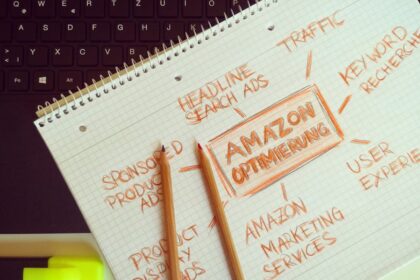Automating Your Facebook Ad Optimization Process
The digital advertising landscape is a ceaseless, dynamic environment where consumer attention fragments across countless touchpoints and competition intensifies daily. Within this arena, Facebook and Instagram ads stand as formidable tools for reaching vast, targeted audiences. However, the sheer volume of data, the myriad of variables, and the relentless pace of change make manual optimization an increasingly Herculean, often unsustainable, task. Brands and marketers are constantly battling for optimal return on ad spend (ROAS), striving to lower cost per acquisition (CPA), and seeking to maximize conversion rates. This relentless pursuit of efficiency and effectiveness has unequivocally necessitated a shift towards automation in Facebook ad management. Automating your Facebook ad optimization process isn’t merely a convenience; it’s a strategic imperative that frees up valuable human capital, reduces the margin for error, and allows for rapid, data-driven responses to fluctuating market conditions. It transforms ad management from a reactive chore into a proactive, intelligent system designed for continuous improvement and scalable growth.
The Imperative for Automation in Facebook Ad Management
Manual optimization of Facebook ad campaigns, while providing granular control, is inherently limited by human capacity. A campaign manager might diligently review performance metrics several times a day, adjusting bids, budgets, or pausing underperforming ads. However, this process is laborious, prone to human bias or oversight, and incapable of reacting with the speed and precision that algorithms can achieve. Consider an ad account running dozens or hundreds of campaigns, ad sets, and ads simultaneously. Each of these components generates real-time data on impressions, clicks, conversions, frequency, ROAS, CPA, and countless other metrics. Interpreting this ocean of data, identifying trends, and executing timely adjustments across all levels is simply beyond the scope of manual operation, especially at scale.
Moreover, the human decision-making process is often hampered by fatigue, emotional responses, or the sheer volume of information that needs to be processed simultaneously. A marketer might inadvertently miss a critical dip in ROAS for a specific ad set over a weekend, leading to unnecessary ad spend. Conversely, they might fail to capitalize on a sudden surge in conversions for another, missing an opportunity to scale. Automated systems, by their very nature, are devoid of these human limitations. They operate 24/7, processing data points instantaneously, identifying patterns that are invisible to the human eye, and executing predefined or algorithmically determined actions without delay. This continuous, unbiased operation ensures that campaigns are always operating within their optimal parameters, or are adjusted to regain efficiency as soon as performance deviates. The core benefit of automation, therefore, lies in its ability to enhance efficiency, improve effectiveness, and enable scalability far beyond what manual efforts can achieve, consistently driving better ROAS and lower CPAs.
Foundational Elements of Facebook Ad Optimization
Before delving into the intricacies of automation, it’s crucial to understand the fundamental elements of Facebook ad optimization that automation seeks to enhance. These are the levers that marketers pull, and the metrics they monitor, to ensure campaigns are performing optimally.
Key Performance Indicators (KPIs)
At the heart of any optimization strategy lies the identification and relentless pursuit of specific KPIs. These metrics serve as the compass guiding all optimization efforts, whether manual or automated. For e-commerce businesses, primary KPIs often include Return on Ad Spend (ROAS), Cost Per Purchase (CPP) or Cost Per Acquisition (CPA), and Conversion Rate. For lead generation, it might be Cost Per Lead (CPL) and Lead Quality. Branding campaigns might prioritize Reach, Frequency, and Brand Lift. It’s imperative that these KPIs are clearly defined and accurately tracked through proper Facebook Pixel implementation and event setup. Automation systems rely entirely on the integrity and accuracy of this data to make informed decisions. A rule designed to pause ad sets with a ROAS below 2.0x is useless if your ROAS data is incorrectly reported due to a misconfigured pixel.
Bidding Strategies
Facebook offers various bidding strategies, each suited for different campaign objectives and optimization goals. Understanding these is vital, as automation often involves manipulating or selecting the most appropriate strategy.
- Lowest Cost (Bid Strategy: Lowest Cost): This default strategy aims to get the most results for your budget. Facebook’s algorithm attempts to spend your budget efficiently without setting a specific cost cap. It’s generally good for maximizing volume.
- Bid Cap (Bid Strategy: Bid Cap): Here, you tell Facebook the maximum bid you’re willing to make in any auction. This gives you more control over your costs, but can limit delivery if your bid cap is too low.
- Cost Cap (Bid Strategy: Cost Cap): You set an average cost per result you’re willing to pay. Facebook’s system will try to achieve results around this average, potentially bidding higher or lower for individual auctions to meet the overall average. This offers a balance between cost control and volume.
- ROAS Goal (Bid Strategy: Minimum ROAS): Available for purchase conversion campaigns, this strategy tells Facebook to aim for a minimum return on ad spend. You specify the minimum ROAS you want to achieve, and the system optimizes delivery to meet or exceed that goal. This is a powerful strategy for e-commerce.
Automated systems can dynamically adjust the choice of bidding strategy or the values within those strategies (e.g., changing a bid cap or ROAS goal) based on real-time performance, ensuring the most cost-effective acquisition of desired results.
Budget Allocation
Effective budget management is paramount for campaign success. Facebook offers two primary budget types:
- Daily Budget: The average amount you’re willing to spend per day.
- Lifetime Budget: The total amount you’re willing to spend over the entire campaign or ad set duration.
Beyond these, Campaign Budget Optimization (CBO) allows Facebook’s system to automatically distribute your budget across your ad sets to get the best results, rather than manually allocating specific amounts to each. Automation can further refine CBO by dynamically adjusting the overall campaign budget based on aggregate performance or reallocating budget between ad sets within a non-CBO structure based on their individual ROAS or CPA. This ensures that budget is always funneled towards the highest-performing segments, maximizing overall efficiency.
Audience Targeting
Targeting the right audience is foundational to ad success. Facebook’s extensive targeting options—demographics, interests, behaviors, custom audiences (from website visitors, customer lists), and lookalike audiences—allow for incredible precision. Optimization often involves refining these audiences, excluding underperforming segments, or scaling successful ones. Automated systems can identify which audience segments are most profitable and recommend or automatically adjust targeting parameters, or even dynamically generate new lookalike audiences based on recent high-value converters. This dynamic audience management ensures that ads are always shown to the most receptive potential customers.
Creative & Copy
While less directly “automatable” in terms of generation (though AI is rapidly changing this), the performance of ad creatives (images, videos) and copy (headlines, primary text, calls to action) is critical. Optimization here involves A/B testing different variations to see which resonates most with the target audience. Automated tools can facilitate this by automatically rotating creatives, pausing underperforming ones, and allocating more budget to winners. Dynamic Creative Optimization (DCO) takes this a step further, automatically combining various creative assets (images, videos, headlines, descriptions, CTAs) into thousands of permutations and serving the best-performing combinations to individual users based on their likelihood to respond. This allows for hyper-personalized ad experiences at scale.
Leveraging Facebook’s Native Automated Rules
The simplest and most accessible form of automation within Facebook Ads Manager is through its native “Automated Rules” feature. These rules allow you to define specific conditions that, when met, trigger predefined actions on your campaigns, ad sets, or ads. They act as a digital assistant, continuously monitoring your account and executing tasks you would otherwise have to do manually.
Mechanism and Setup
Automated Rules operate on an “if-then” logic. You set up a rule by selecting:
- What to apply the rule to: Campaigns, Ad Sets, or Ads. You can also specify particular campaigns, ad sets, or ads.
- The Action: What the rule should do (e.g., Turn off, Turn on, Adjust budget, Adjust manual bid, Send notification).
- Conditions: The criteria that must be met for the action to trigger (e.g., ROAS < 2.0, CPA > $50, Spend > $100, Frequency > 3.5, Results < 5, CTR < 1%, Impressions > 10,000, etc.). You can combine multiple conditions using AND/OR logic.
- Time Range: The period over which the conditions are evaluated (e.g., Last 3 days, Lifetime, Today, Yesterday).
- Frequency: How often Facebook checks the rule (e.g., Continuously, Hourly, Daily).
Once activated, Facebook’s system automatically checks your specified entities (campaigns, ad sets, ads) against the defined conditions at the chosen frequency. If all conditions are met, the specified action is executed.
Conditions and Actions Deep Dive
Common Conditions:
- Performance Metrics:
- ROAS (Return on Ad Spend): Crucial for e-commerce.
ROAS < X(e.g.,ROAS < 2.5). - CPA (Cost Per Acquisition/Purchase): Core for conversion-focused campaigns.
CPA > Y(e.g.,CPA > $30). - CTR (Click-Through Rate): Indicates ad relevance and appeal.
CTR < Z%(e.g.,CTR < 1.0%). - CPM (Cost Per Mille/1,000 Impressions): Cost of delivery.
CPM > A(e.g.,CPM > $15). - Frequency: How many times the average person sees your ad. High frequency can lead to ad fatigue.
Frequency > B(e.g.,Frequency > 3.0). - Results (e.g., Purchases, Leads): Number of conversions.
Results < C(e.g.,Results < 5).
- ROAS (Return on Ad Spend): Crucial for e-commerce.
- Spend: Total amount spent.
Spend > D(e.g.,Spend > $500). This is often combined with performance metrics to ensure enough data has accumulated before taking action. - Impressions: Total views.
Impressions > E(e.g.,Impressions > 10,000). Also used for data accumulation. - Time Based:
Schedule (e.g., Day of the week is Sunday). Less common for core optimization but useful for specific scheduling needs.
Available Actions:
- Turn Off: Most common action. Used to pause underperforming ads, ad sets, or campaigns.
- Turn On: Less common, but can be used to reactivate something (e.g., if conditions improve after a pause).
- Adjust Budget:
- Increase Daily Budget By/To: Scale up performing ad sets.
- Decrease Daily Budget By/To: Scale down underperforming ad sets.
- Increase Lifetime Budget By/To: Same for lifetime budgets.
- Adjust Manual Bid: Used with manual bidding strategies.
- Increase Bid By/To: Bid more for better results.
- Decrease Bid By/To: Reduce bid to control costs.
- Send Notification: Simply alerts you without taking action. Useful for monitoring or as a first step before an automated action.
Practical Rule Scenarios
1. Pause Underperforming Ad Sets (Stop Loss Rule):
- Apply to: All Active Ad Sets
- Action: Turn Off
- Conditions:
ROAS (Purchase) < 1.5(your breakeven ROAS)AND Spend > $100(ensure enough data is collected)
- Time Range: Last 3 Days
- Frequency: Hourly
- Rationale: This rule ensures that ad sets that are not generating sufficient return on investment, after accumulating a certain spend threshold, are automatically paused, preventing further wasted expenditure.
2. Scale Up Performing Ad Sets (Scale Rule):
- Apply to: All Active Ad Sets
- Action: Increase Daily Budget By
20%(or specific amount) - Conditions:
ROAS (Purchase) > 3.0(your target profitable ROAS)AND Spend > $200AND Daily Budget < $500(prevent over-scaling too quickly)AND Lifetime Spent < Lifetime Budget - $50(ensure budget headroom for lifetime campaigns)
- Time Range: Last 3 Days
- Frequency: Every 6 Hours
- Rationale: Identifies high-performing ad sets and incrementally increases their budget, allowing you to scale winning campaigns automatically without manual intervention. The
Daily Budget < $Xcondition is crucial to prevent uncontrolled scaling and to allow for human review at higher spend levels.
3. Reduce Bid for High CPA (Cost Control Rule):
- Apply to: All Active Ad Sets
- Action: Decrease Manual Bid By
10% - Conditions:
CPA (Purchase) > $40(your target CPA threshold)AND Spend > $150
- Time Range: Last 7 Days
- Frequency: Daily
- Rationale: If you’re using manual bidding, this rule automatically adjusts your bid downwards when your cost per acquisition starts to creep too high, helping to maintain cost efficiency.
4. Combat Ad Fatigue (Frequency Rule):
- Apply to: All Active Ads
- Action: Turn Off
- Conditions:
Frequency > 3.5AND ROAS (Purchase) < 2.0(or another performance metric that indicates decline)
- Time Range: Lifetime
- Frequency: Daily
- Rationale: High frequency can lead to diminishing returns and negative sentiment. This rule pauses ads that are being seen too often by the same audience and are no longer performing optimally, prompting you to refresh your creative.
5. Pause Low CTR Ads (Creative Health Rule):
- Apply to: All Active Ads
- Action: Turn Off
- Conditions:
CTR (Link Click) < 0.8%AND Impressions > 5,000(ensure enough data)AND Spend > $50
- Time Range: Last 7 Days
- Frequency: Daily
- Rationale: A low CTR often signifies that your creative or copy isn’t resonating with your audience. This rule helps prune out underperforming ads early, preventing wasted impressions and clicks.
Advantages and Limitations of Native Rules
Advantages:
- Accessibility: Built directly into Facebook Ads Manager, no third-party tools needed.
- Ease of Use: Relatively simple to set up for basic automation needs.
- Cost-Effective: Free to use.
- Foundation: Provides a solid starting point for understanding automation principles.
Limitations:
- Rule Conflict: Multiple rules can sometimes conflict, leading to unexpected behavior. Careful testing and monitoring are required.
- Basic Logic: Limited to simple “if-then” statements. Cannot handle complex, multi-variable optimization.
- Lack of Predictive Power: Reacts to past performance; does not predict future trends or proactively adjust.
- No Cross-Account Management: Rules are set per ad account.
- No AI/Machine Learning: Lacks the sophistication of advanced algorithms for intelligent budget allocation, smart bidding, or dynamic creative optimization.
- Limited Customization: Predefined metrics and actions. Cannot integrate custom data sources or highly specific calculations.
- Scalability: While useful for basic tasks, managing hundreds of rules across large accounts can become cumbersome itself.
Despite these limitations, Facebook’s native Automated Rules are an excellent entry point into ad automation, providing a tangible benefit for any advertiser looking to optimize their workflow and improve campaign performance.
Advanced Automation Platforms and AI-Driven Optimization
While Facebook’s native rules offer a valuable baseline, true sophisticated automation, especially at scale, often requires leveraging dedicated third-party platforms. These tools integrate directly with the Facebook Ads API, offering advanced functionalities powered by artificial intelligence (AI) and machine learning (ML) algorithms. They move beyond simple rule-based logic to offer predictive optimization, dynamic decision-making, and holistic campaign management.
Beyond Rule-Based: AI/ML Principles
The fundamental difference between rule-based automation and AI/ML-driven automation lies in their adaptability and intelligence.
- Rule-based: “If X happens, then do Y.” Static, reactive, and requires human definition of all possible scenarios.
- AI/ML-driven: Learns from vast datasets, identifies complex patterns, and makes dynamic, probabilistic decisions to achieve a defined objective. It can adapt to new data, optimize for multiple variables simultaneously, and even predict future outcomes.
AI/ML algorithms, particularly those leveraging neural networks and deep learning, can analyze historical campaign data, identify correlations between different variables (e.g., audience demographics, creative elements, time of day, bid amounts) and performance metrics (e.g., ROAS, CPA). They can then use this understanding to:
- Predict: Forecast future performance under different scenarios.
- Recommend: Suggest optimal bids, budgets, or audience segments.
- Automate: Execute complex adjustments in real-time to maximize desired outcomes.
- Discover: Uncover non-obvious insights and opportunities.
This intelligent, self-optimizing capability is what sets advanced platforms apart.
Smart Bidding & Budgeting Tools
One of the most impactful applications of AI in ad automation is in smart bidding and intelligent budget allocation.
- Predictive Bidding: Instead of setting a static bid or relying on basic cost caps, AI-driven bidding tools analyze real-time auction dynamics, competitor bids, audience segment value, and historical conversion rates. They then predict the optimal bid for each individual impression to maximize conversions while adhering to a target CPA or ROAS. This allows for hyper-granular bidding adjustments that are impossible for humans to perform manually. Some tools can even account for LTV (Lifetime Value) of customers when placing bids.
- Dynamic Budget Allocation: Beyond Facebook’s CBO, advanced platforms can dynamically reallocate budgets across campaigns, ad sets, and even different platforms (e.g., Google Ads, TikTok Ads) in real-time. They continuously monitor performance across your entire ad portfolio and shift budget towards the highest-performing assets with the greatest potential for incremental gains. For instance, if an ad set shows a sudden surge in conversions at a low CPA, the system can immediately inject more budget into it, capitalizing on the opportunity without waiting for manual review. Conversely, if performance drops, budget is swiftly pulled back. This ensures that every dollar is spent where it yields the best return.
- Budget Pacing: These tools can also intelligently pace your budget throughout the day or month, ensuring that you don’t overspend too early or underspend late in a cycle, optimizing for consistent delivery and performance.
Dynamic Creative Optimization (DCO)
DCO is a powerful application of automation that moves beyond simple A/B testing of full ad variants. Instead, it breaks down ads into their constituent elements: images, videos, headlines, primary text, calls to action (CTAs), and even formats.
- Automated Assembly: The system can automatically combine these individual assets into thousands or even millions of unique ad permutations.
- Real-time Personalization: Using data about the user (their browsing history, demographics, interests), the system dynamically assembles and serves the most relevant and highest-performing combination of assets to each individual in real-time. For example, a user interested in sports might see a specific product with a sporty image and a headline about athletic performance, while another user interested in fashion might see the same product with a lifestyle image and a headline about style.
- Continuous Learning: The DCO engine continuously learns which combinations of assets perform best for which audience segments, refining its serving strategy over time. This not only optimizes performance but also dramatically speeds up the creative testing process and reduces ad fatigue by constantly showing fresh, relevant content.
- Scalability: DCO allows brands with large product catalogs to generate and optimize countless ad variations without manual effort, showcasing highly personalized ads to vast audiences.
Automated A/B Testing
While Facebook offers its own A/B testing features, advanced automation platforms elevate this process.
- Intelligent Test Design: Some tools can suggest optimal test designs based on historical data, determining which variables to test (e.g., audience, creative, bid strategy) and the ideal sample size or duration.
- Automated Winner Identification: They automatically run the tests, monitor performance, and statistically determine the winning variant based on predefined KPIs (e.g., highest ROAS, lowest CPA).
- Automated Implementation: Crucially, they can then automatically scale the winning variant (e.g., allocate more budget to the winning ad set, pause the losing ones) or even integrate the learning into the overall optimization strategy for future campaigns. This eliminates the need for manual analysis and subsequent action, accelerating the optimization cycle.
- Multi-Variate Testing: Beyond simple A/B, these platforms can often handle multi-variate tests, simultaneously testing several variables to find the optimal combination.
Automated Reporting & Alerts
Data overload is a common challenge in digital advertising. Advanced automation platforms address this by providing sophisticated, customizable reporting and alerting capabilities.
- Custom Dashboards: Users can create tailored dashboards that display only the most relevant KPIs and visualizations for their specific needs, often pulling data from multiple ad platforms and analytics tools into a single view.
- Automated Reports: Generate scheduled reports (daily, weekly, monthly) delivered directly to stakeholders, providing timely insights without manual data compilation.
- Proactive Alerts: Set up custom alerts based on performance thresholds or anomalies. For example, an alert might be triggered if CPA suddenly jumps by 20% in an hour, or if daily spend deviates significantly from the allocated budget. These alerts can be delivered via email, Slack, or other communication channels, enabling rapid human intervention when necessary. This combination of automated monitoring and proactive notification ensures that human oversight remains effective without constant manual checking.
Specific Functionalities of Third-Party Tools (General Descriptions)
While not naming specific products, these platforms typically offer a combination of the following advanced features:
- Predictive Analytics: Forecasting future campaign performance based on current trends and historical data, allowing for proactive strategy adjustments.
- Audience Segmentation and Refinement: Automatically identifying high-value audience segments, refining targeting parameters, and dynamically creating new lookalike audiences based on recent converters or high-LTV customers.
- Automated Creative Refresh: Monitoring creative performance and automatically flagging or swapping out ads that are experiencing fatigue or declining CTR/ROAS, prompting the creation of new assets.
- Cross-Platform Orchestration: Some platforms extend beyond Facebook to integrate with Google Ads, TikTok Ads, Snapchat Ads, etc., allowing for holistic budget and performance management across your entire digital advertising ecosystem.
- Custom Metric Integration: Ability to integrate custom metrics from CRM or analytics systems to enrich optimization decisions (e.g., offline conversions, customer lifetime value).
- Experimentation Frameworks: Tools to design and execute complex experiments (e.g., incrementality tests) to understand the true causal impact of your advertising.
The investment in such platforms is often justified by the significant improvements in ROAS, efficiency, and scalability they provide, transforming ad management into a highly sophisticated, data-driven operation.
Strategic Integration of Automation with Business Objectives
Automation is not an end in itself; it’s a powerful means to achieve specific business objectives. Effective integration requires a clear understanding of your marketing funnel, custom conversion points, and the overall customer journey.
Aligning Automation with Funnel Stages
Different stages of the marketing funnel have distinct objectives and KPIs, requiring tailored automation strategies.
- Awareness Stage (Top of Funnel – TOFU):
- Objective: Maximize reach, impressions, and brand visibility at an efficient cost.
- Automation: Use rules to pause campaigns with excessively high CPMs or low CTRs. Automate scaling of campaigns that achieve broad reach within target demographics while maintaining cost efficiency. Automated creative rotation to prevent ad fatigue across broad audiences.
- Consideration Stage (Middle of Funnel – MOFU):
- Objective: Drive engagement (link clicks, video views, landing page views) and generate qualified leads.
- Automation: Rules to optimize for lower Cost Per Link Click (CPCC) or Cost Per Landing Page View (CPLPV). Automated lead nurturing sequences (though typically outside Facebook Ads Manager, often integrated with CRM). Dynamic creative optimization to show different product benefits or testimonials based on user behavior. Automated generation of website visitor custom audiences for retargeting.
- Conversion Stage (Bottom of Funnel – BOFU):
- Objective: Maximize purchases, sign-ups, or other direct conversions at an optimal CPA/ROAS.
- Automation: This is where the most aggressive automation typically occurs. Rules to pause ad sets with high CPA or low ROAS. Rules to increase budget for high-ROAS ad sets. Smart bidding tools focused on minimum ROAS or cost caps. Automated generation of lookalike audiences from recent converters. Dynamic product ads (DPAs) leveraging DCO to show specific products viewed or added to cart.
- Retention/Loyalty Stage (Post-Purchase):
- Objective: Drive repeat purchases, increase customer lifetime value (LTV), and encourage referrals.
- Automation: Automated retargeting campaigns for past purchasers, segmenting them by purchase history or time since last purchase. Automated exclusion of recent purchasers from acquisition campaigns. Dynamic upsell/cross-sell campaigns based on previous purchases.
Custom Conversions & Value Optimization
For advanced automation, particularly with AI/ML systems, it’s crucial to move beyond standard conversions.
- Custom Conversions: Define specific actions on your website or app that are highly valuable but might not be standard events (e.g., “demo request submitted,” “high-value content downloaded,” “reached specific page”). These allow for more precise optimization.
- Value Optimization: Facebook allows you to optimize for conversion value, meaning the algorithm will try to maximize the total value of purchases rather than just the number of purchases. This is critical for businesses with varying product prices. AI-driven platforms excel at this, identifying patterns among high-value customers and optimizing delivery to reach similar individuals. Ensure your Facebook Pixel sends purchase value data accurately. This allows for automation rules based on value (e.g., “pause ad set if Avg. Purchase Value < $100”).
Automated Retargeting and Lookalike Generation
- Dynamic Retargeting: Automated systems can create highly granular retargeting segments based on user behavior (e.g., viewed specific product, added to cart but didn’t purchase, spent X minutes on site, visited Y pages). They can then automatically trigger specific ad creatives and offers to these segments. Dynamic Product Ads (DPAs) are a prime example, automatically showing users the exact products they viewed or added to their cart, often with an automated discount.
- Automated Lookalike Audience Generation & Refresh: Instead of manually creating lookalikes from your customer lists or website visitors, automation tools can continuously refresh these audiences based on recent high-value converters or customer list updates. Some advanced systems can even identify new, unexpected lookalike sources based on complex behavioral patterns, providing continuous fresh audience pools for acquisition. This ensures your lookalikes are always built from the most relevant and up-to-date data.
Prerequisites and Best Practices for Successful Automation
Implementing automation without proper foundational elements can lead to disastrous results. Just as a self-driving car needs accurate sensors and precise mapping, ad automation requires clean data and a well-structured environment.
Pixel Integrity and Event Tracking
The Facebook Pixel is the lifeblood of ad optimization. For automation to be effective, your pixel must be:
- Correctly Installed: On all relevant pages of your website or app.
- Firing Correctly: Ensuring all standard events (PageView, ViewContent, AddToCart, InitiateCheckout, Purchase, Lead, CompleteRegistration, etc.) are firing accurately with the correct parameters (especially
valuefor purchases). - Sending Relevant Data: Beyond standard events, custom parameters (e.g., content_ids, content_type, num_items) enhance the data richness for DCO and advanced audience segmentation.
- API Conversions (CAPI) Integrated: For greater data accuracy and resilience against browser tracking limitations, implementing the Conversions API alongside or instead of the pixel is increasingly crucial. CAPI sends server-side conversion data directly to Facebook, improving attribution and optimization signals.
Any inaccuracy in pixel data directly translates to flawed automation decisions. If your pixel misreports purchases, your ROAS rules will be based on bad data, leading to incorrect scaling or pausing. Regularly audit your pixel and event setup using Facebook’s Event Manager and Pixel Helper.
Clean Data and Consistent Naming Conventions
Garbage in, garbage out. Automation systems thrive on clean, consistent data.
- Consistent Naming: Adopt a consistent naming convention for campaigns, ad sets, and ads (e.g.,
[Objective]_[Audience Type]_[Creative Type]_[Date]). This makes it easier to set up rules that target specific types of campaigns or to analyze performance across similar segments. Automated tools often allow you to create rules based on naming patterns. - Tagging and Labeling: Utilize Facebook’s tagging features or leverage platform-specific labeling to categorize your campaigns, ad sets, or ads. This provides another layer of organization that automation rules can leverage.
- Data Quality Checks: Before relying heavily on automation, conduct manual spot checks of your data to ensure accuracy. Cross-reference Facebook data with your Google Analytics or CRM data.
Granular Campaign Structure
While CBO encourages a flatter structure, a well-thought-out, somewhat granular campaign structure often provides more levers for automation.
- Segmented Audiences: Running separate ad sets for different audience segments (e.g., cold lookalikes, warm retargeting, hot abandoners) allows for distinct optimization rules and budget allocation.
- Targeted Creatives: Use different ads within ad sets to test various creatives. This provides the automation system with more data points to identify winning creative variations.
- Clear Objectives: Each campaign and ad set should have a clear, singular objective. Trying to achieve multiple conflicting objectives within one ad set can confuse automation algorithms.
Continuous Monitoring and Iteration
Automation does not mean “set it and forget it.” It requires continuous human oversight and iteration.
- Regular Review: Even with sophisticated alerts, routinely check your automated systems. Are the rules performing as expected? Are there any unexpected side effects?
- Performance Baselines: Understand your typical performance baselines (average CPA, ROAS, CTR) before implementing automation. This provides context for evaluating whether automation is truly improving results.
- A/B Test Automation Itself: Experiment with different rule parameters or automation strategies. For example, test a rule that increases budget by 10% vs. one that increases by 20% to see which scales more effectively.
- Adapt to Changes: The Facebook ad platform constantly evolves. Algorithm updates, new features, and market shifts require you to review and adjust your automation strategies accordingly. What worked last month might not be optimal today.
- Debug and Troubleshoot: Be prepared to troubleshoot if rules misfire or if performance unexpectedly declines. Automation can sometimes reveal underlying data or setup issues that were previously masked.
Challenges, Pitfalls, and the Human Element
Despite its immense benefits, automation is not without its challenges and potential pitfalls. Blindly implementing automation without understanding its nuances can lead to suboptimal outcomes or even financial losses.
Over-Automation Syndrome
One common trap is “over-automation,” where too many rules or overly aggressive automation parameters lead to a chaotic system.
- Rule Conflicts: As mentioned, multiple rules targeting the same entity with conflicting actions (e.g., one rule trying to increase budget while another decreases it) can lead to an unstable campaign.
- Too Frequent Changes: Constantly adjusting bids and budgets can prevent the Facebook algorithm from exiting its “learning phase” effectively. The algorithm needs stable conditions and sufficient data to learn and optimize. Rapid, aggressive changes can send it back into learning, limiting performance.
- Loss of Context: Automation systems are purely data-driven. They don’t understand external factors like seasonal sales, competitor activities, or broader marketing initiatives unless explicitly programmed. Over-automation might ignore these crucial contextual elements.
Dependency and Loss of Insight
Relying solely on automation can lead to a decreased understanding of your campaign’s performance dynamics. If the system is making all the decisions, human marketers might lose the ability to interpret raw data, identify emerging trends manually, or understand the “why” behind performance shifts. This can be detrimental when the automation system falters or when unique, unexpected market conditions arise. The goal is to leverage automation for efficiency, not to abdicate all strategic thinking.
Cost vs. Benefit
While native Facebook rules are free, advanced third-party automation platforms come with a cost, often a monthly subscription fee based on your ad spend. Marketers need to evaluate whether the potential increase in ROAS, decrease in CPA, and savings in human labor justify the investment. For smaller ad accounts or those with very simple needs, the cost of an advanced platform might outweigh the benefits. For larger advertisers managing significant ad spend, the return on investment from automation can be substantial.
The Indispensable Role of Human Oversight
Crucially, automation does not eliminate the need for human marketers; it redefines their role. Instead of spending hours on manual adjustments, marketers can shift their focus to higher-level strategic activities:
- Strategic Planning: Defining overarching goals, developing new campaign ideas, identifying market opportunities.
- Creative Development: Designing compelling ad creatives and writing persuasive copy, as creativity remains largely a human domain (though AI is assisting).
- Audience Research: Deep diving into customer psychology, identifying unmet needs, and discovering new audience segments.
- Problem Solving: Debugging issues, troubleshooting underperforming campaigns that automation can’t fix, and adapting to unexpected market shifts.
- A/B Testing New Hypotheses: Automation optimizes existing strategies; humans are needed to conceive and test entirely new approaches.
- Interpretation and Reporting: Translating complex data into actionable insights for stakeholders, and communicating campaign performance in a business context.
- System Refinement: Continuously optimizing the automation rules and parameters themselves.
The most successful ad accounts leverage automation as a powerful co-pilot, not as a replacement for the human pilot. It allows marketers to be more strategic, proactive, and ultimately, more effective.
Future Landscape of Facebook Ad Automation
The trajectory of ad automation points towards increasingly intelligent, predictive, and personalized advertising experiences. As AI and machine learning capabilities advance, the line between manual optimization and automated intelligence will blur further.
Predictive Analytics
The future will see even more sophisticated predictive analytics. Current automation reacts to what has happened. Future systems will leverage vast datasets (including real-time trends, macroeconomic indicators, competitor activity, and even weather patterns) to forecast future performance with high accuracy. This will enable:
- Proactive Budgeting: Algorithms will suggest and automatically implement budget shifts based on anticipated demand or performance fluctuations.
- Optimized Launch Schedules: Ads will launch at times predicted to yield the highest ROAS based on historical patterns and real-time market signals.
- Risk Mitigation: Systems will alert marketers to potential performance drops before they occur, allowing for preemptive adjustments.
Generative AI for Creative
Perhaps one of the most exciting and disruptive developments is the rise of generative AI in creative production.
- Automated Copy Generation: AI models can already generate ad copy variations based on product descriptions, target audience data, and performance goals.
- Dynamic Image/Video Generation: Soon, AI will be able to generate entire ad creatives (images, videos) that are highly personalized and optimized for specific audience segments, based on what the system has learned performs best. This moves beyond DCO’s “assembly” to true “creation.”
- Concept Testing: AI can quickly generate numerous creative concepts and even predict their likely performance before they are even tested, dramatically shortening the creative iteration cycle.
This will allow marketers to produce vast quantities of highly relevant and effective creative assets at scale, minimizing creative fatigue and maximizing engagement.
More Robust Cross-Platform Unified Automation
Currently, managing automation across Facebook, Google Ads, TikTok, and other platforms can be siloed. The future points towards truly unified, cross-platform automation dashboards and algorithms.
- Holistic Budget Management: A single intelligent system will manage and optimize ad spend across all major platforms, dynamically shifting budget to where it yields the highest return at any given moment, regardless of the platform.
- Cross-Channel Attribution: More accurate and real-time cross-channel attribution models will feed into these unified systems, allowing for truly optimized spend across the entire marketing funnel, eliminating channel-specific biases.
- Unified Audience Insights: Aggregated insights from user behavior across multiple platforms will inform even more precise targeting and personalization.
The automation of Facebook ad optimization is a continuous journey, not a destination. It’s about harnessing the power of data and algorithms to amplify human intelligence, drive superior performance, and ensure that your advertising efforts are always operating at their peak efficiency in an ever-evolving digital world. Embracing this evolution is no longer optional; it’s fundamental to competitive advantage in performance marketing.











